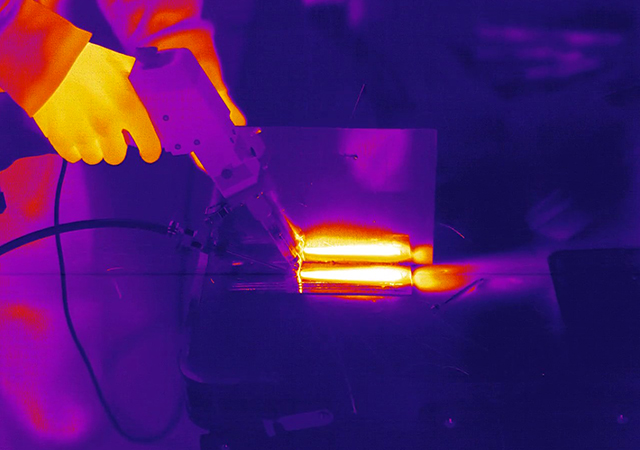Laser welding has become a widely adopted technique in various industries due to its precision, speed, and versatility. To enhance the efficiency and quality of laser welding processes, the integration of infrared thermal imaging technology has emerged as a valuable tool. By capturing and analyzing thermal images, this technology allows for real-time monitoring and assessment of heat distribution during welding, leading to improved process control, product quality, and overall efficiency.
Enhanced Process Control
Infrared thermal imaging technology provides real-time visualization of the heating and cooling patterns in laser welding. By monitoring the temperature distribution across the weld zone, it enables precise control over the welding parameters, such as laser power, travel speed, and material feed rate. This allows welders to make adjustments on-the-fly, ensuring consistent heat input and minimizing the risk of defects, such as weld discontinuities or excessive thermal distortion.

Quality Assurance
In laser welding, the quality of the weld joint is crucial for the structural integrity and functionality of the final product. By utilizing infrared thermal imaging, potential defects, such as lack of fusion, porosities, or irregular heat distribution, can be detected and addressed promptly. This real-time monitoring facilitates immediate corrective actions, resulting in higher quality welds and reducing the need for post-weld inspections or rework.
Optimized Energy Efficiency
Infrared thermal imaging technology assists in optimizing energy utilization during laser welding. By closely monitoring the heat distribution, it helps determine the most efficient laser power setting for specific material and joint configurations. This not only reduces energy consumption and operating costs but also enhances the environmental sustainability of the welding process.
Preventive Maintenance
Thermal imaging can be used to evaluate laser welder performance and identify potential equipment issues before they cause costly disruptions. By regularly inspecting the thermal profiles of the weld zone, maintenance personnel can detect abnormalities, such as misalignments, cooling system malfunctions, or dirty optics, that can negatively impact welding performance. Timely detection and resolution of these issues minimize unplanned downtime and maintenance costs.
Future Trends and Innovations
As infrared thermal imaging technology continues to evolve, novel applications are emerging within laser welding. For instance, advanced algorithms and automation are being developed to analyze thermal images and provide real-time feedback for closed-loop control of laser welding parameters. Additionally, integration with other sensing technologies, such as vision systems or spectroscopy, holds the potential for comprehensive process monitoring and control.
The integration of infrared thermal imaging technology in laser welding has revolutionized the way we approach this precision joining technique. By providing real-time visualization of the thermal profile, it enables enhanced process control, improved quality assurance, optimized energy efficiency, and proactive maintenance. As the technology advances, it promises further innovations and contributes to the continuous development of laser welding in various industries, including automotive, aerospace, electronics, and more.
Go Top